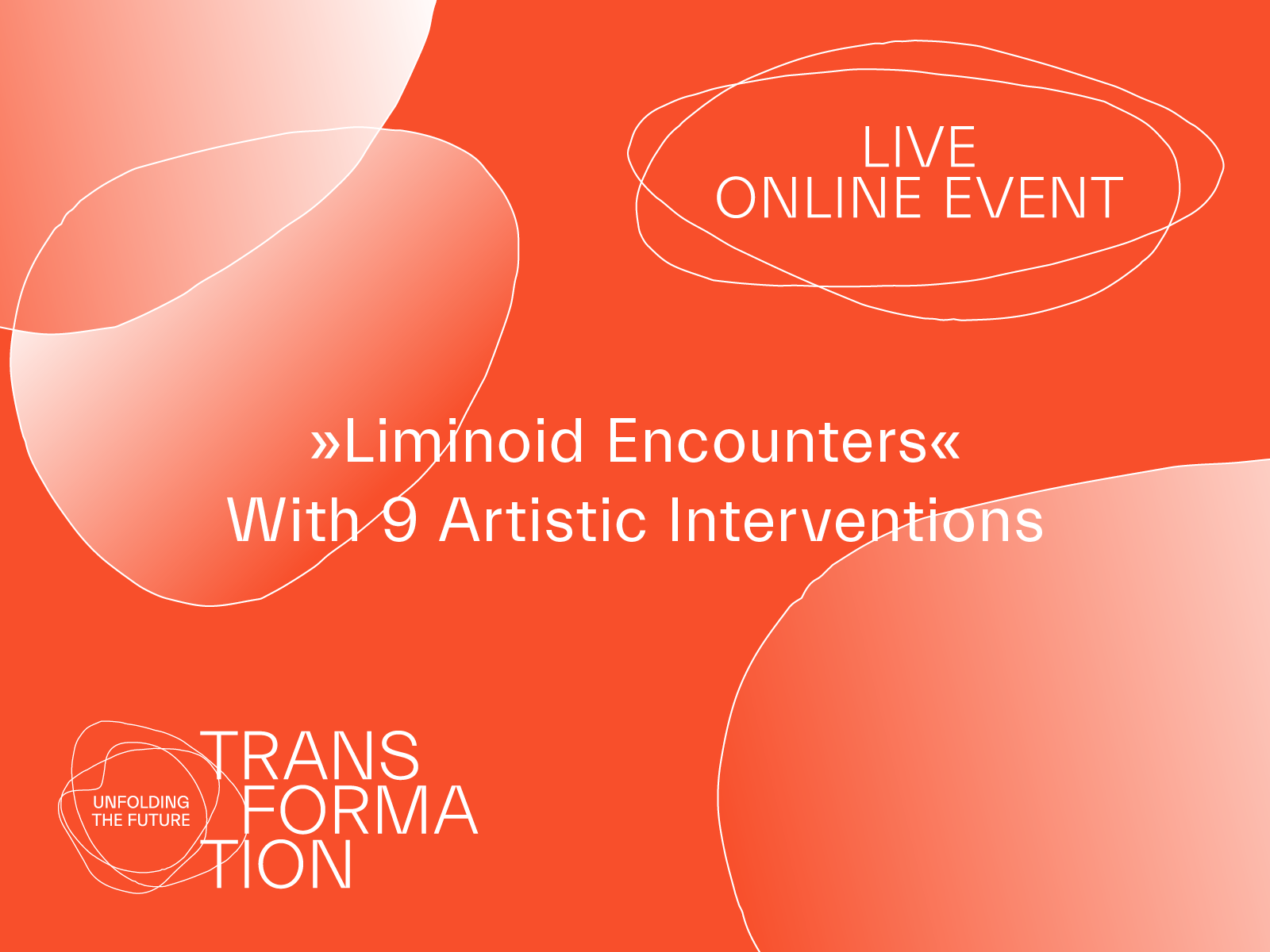
Berit Fischer (http://www.beritfischer.org), a recent WSA PhD graduate, is curating an exciting three-day live online event (10-12 Dec 2020), Liminal Encounters. Details are below; registration and full details of the programme are at this link.
WINCHESTER SCHOOL OF ART

Berit Fischer (http://www.beritfischer.org), a recent WSA PhD graduate, is curating an exciting three-day live online event (10-12 Dec 2020), Liminal Encounters. Details are below; registration and full details of the programme are at this link.

Ana Čavić, currently a WSA PhD student, below discusses her artwork, ‘Rules that order the reading of clouds’, exhibited by the Intermission Museum of Art.
John Beck & Ryan Bishop Technocrats of the Imagination, recently published by Duke University Press, is about a particularly striking form of interdisciplinarity: the Cold War cooperation between the military-industrial complex and avant-garde art. Below, Ryan shares some of the background related to how he came to co-author the book, the experience of writing the book and the continued necessity of understanding the Cold War.
The right to look is not about seeing. It begins at a personal level with the look into someone else’s eyes to express friendship, solidarity, or love. That look must be mutual, each person inventing the other, or it fails … It is the claim to a subjectivity that has the autonomy to arrange the relations of the visible and the sayable. The right to look confronts the police who say to us, ‘Move on, there’s nothing to see here.’ Only there is, and we know it and so do they.1
Dave Ball, currently pursuing a practice-based PhD at Winchester School of Art, presented ‘Absurdity, Absurdity, and Absurdity‘ as part of Conversas series at Schillerpalais, Berlin, 29 Nov 2017. The following are his reflections on the event.
Conversas is a regular series of thematically diverse talks held with the aim of creating discussion and dialogue, where audience members are encouraged to interrupt and ask questions, and presenters are warned against preparing “too tightly”. I decided, therefore, not to give a conventionally coherent presentation of my work or my PhD research, but instead treat the event as a public testing-ground for some of the more speculative elements emerging out of my research into absurdity.
The plan was to present a series of examples of what I’d identified as eight variants of absurdity observable in works of contemporary art. Since those categorisations were, to a degree, based on my own intuitive assertions about what would or wouldn’t constitute “absurdity”, I was very keen to test them out publicly.
The talk began with a short screening of one of my own video works, which was greeted appreciatively, followed by a brief introduction to my research. As soon as the presentation turned to the work of other artists, however, the atmosphere in the room became unexpectedly heated. In fact, the very first slide shown (a photo by Thomas Ruff of a man inelegantly attempting a handstand on a leather chair, legs flailing in the air) received an immediate rebuttal that “Why shouldn’t we do handstands on chairs? Why is that absurd? That’s so conservative!”
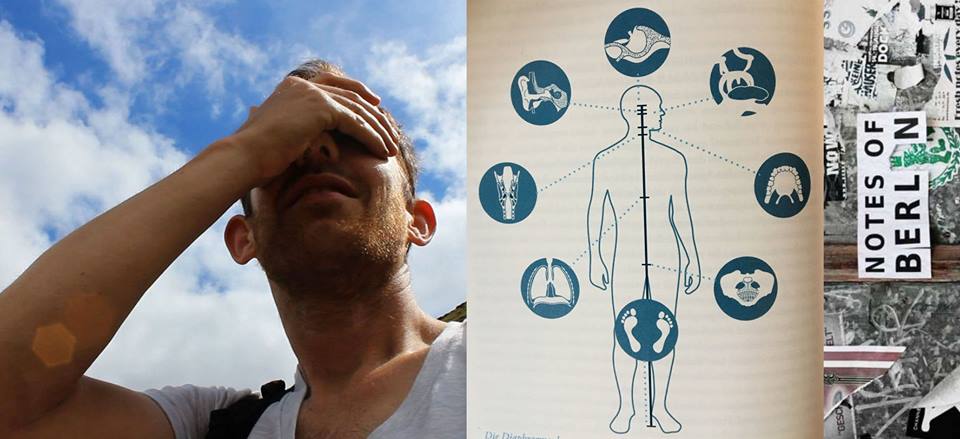
In fact, almost every slide I showed initiated some tirade or other on what various audience members seemed to consider an affront to their intelligence, their outlook on life, or at least their conception of art. My gentle conceptual enquiry into whether or not the works could be considered absurd was frequently met with an impassioned and resounding “no!” Whist some of these protestations could easily be dealt with through reasoned argumentation or clarification of concepts, others unearthed genuinely fertile grounds for further investigation. But what took me completely by surprise was the level of passion, conviction, and emotion with which the audience responded to the topic. Absurdity, as was repeatedly made clear, really matters – and not just to this particular PhD researcher…
Jason Kass recenlty completed his PhD at Winchester School of Art. The title of his thesis is ‘Cognitive Aspects of Pictorial Address and Seriality in Art: A Practice-led Investigation’. In this post he offers an overview of the nature and scope of his research.
My doctoral research explored the perceptual and cognitive processes that underlie spectatorship of pictorial artworks and incorporated insights into the production of new works of art. The fundamental premise of my research was that artworks exist as part of the visual world and are subject to the same visual processes as ordinary scenes and objects. Applying existing empirical findings from cognitive psychology to spectatorship of works of art allows for a more complete understanding of pictorial address.
Using theories and methods from psychology to understand the experience of artworks is not in itself novel. The field of empirical aesthetics boasts a wide literature comprising experiments around aesthetic preference and art appreciation. My research differs based on my position as a visual artist rather than a scientist and my emphasis on relating psychological findings to existing art theory and art historical narratives. The incorporation of practice-based research in the form of producing new works of art (Fig. 2) also brings a different perspective to an established yet often divisive discipline.
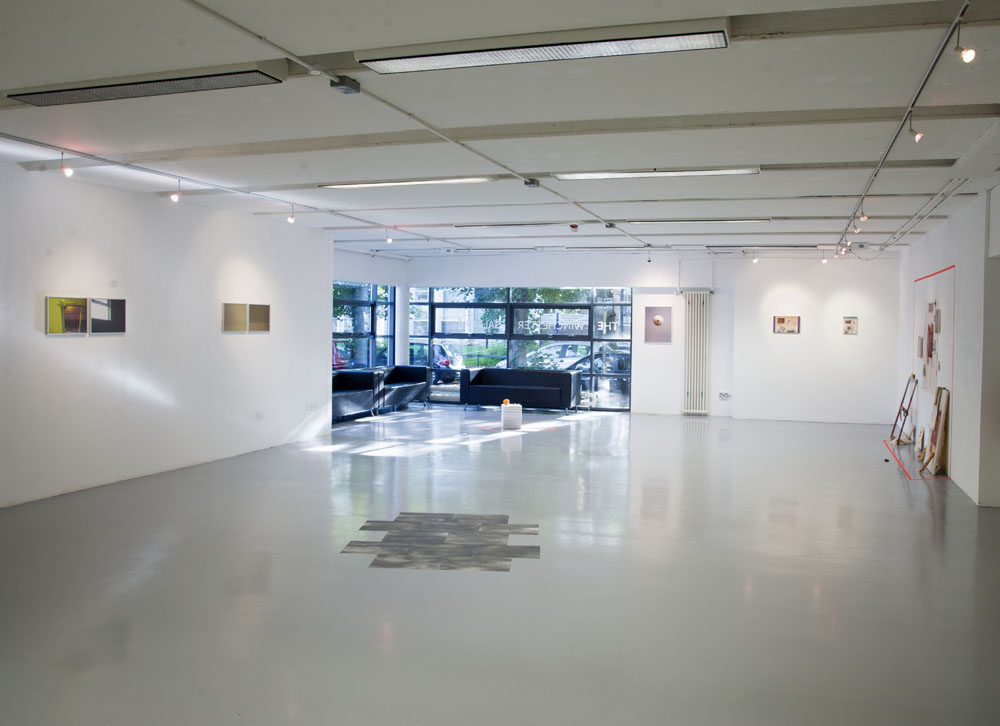
Within the thesis, I focused on seriality as an aesthetic strategy and the mode of address offered by serial works of art. Serial artworks have previously been theorised, in particular by Coplans (1968), who established a distinction between serial artworks that comprise multiple discrete but related instances and pictures produced along the masterpiece model. Fer (2004) has said about seriality, “It brings with it a whole set of assumptions about the nature of aesthetic experience as direct and spontaneous” (p.4).
My research sought to reveal the direct impact of seriality on the experience of the viewer by way of cognitive and perceptual processes. In the first instance I considered Monet’s painted series of the Rouen Cathedral. A proto-serial artwork, Monet understood the importance of exhibiting the nearly thirty paintings depicting different light and weather conditions being exhibited together.
I consulted theories of concept formation and face recognition that speak to the ability to form a stable mental concept from a set of varied instances: a feature essential to navigating a complex visual world. Findings within the study of face recognition indicate that the process may involve retaining invariant information across instances while eliminating extraneous superficial details; a process akin to averaging (Young & Bruce, 2011).

Applying this same premise to Monet’s cathedrals it is possible to infer that the variation in colour and luminosity across the paintings prompts the viewer to form a stable mental concept that lasts long after the in situ viewing (Fig. 2). With regard to art historical narratives, this implies that Monet’s series are as much conceptual as they are perceptual in nature, which runs counter to Duchamp’s well-known exclamation of Impressionist artworks as purely retinal in nature (Krauss, 1990; de Duve, 1996). I explored these findings through photography, drawing and found images (Fig. 3).

The second case study examined Warhol’s use of serial repetition in works from his Death and Disaster series that repeat a gruesome image multiple times across a single canvas. Warhol said, “when you see a gruesome picture over and over again it doesn’t really have any effect” (quoted in Goldsmith, 2004, p.19). He presumed that repeated exposure to an distressing image results in a ‘deactivating’ of the negative affect.
Employing existing psychological findings regarding repeated exposure (Zajonc, 1968) it is possible to infer that viewing artworks from the series ultimately leads to an increase in negative affect for the viewer, despite an initial increase in positive affect as a result of repetition. This is due to increased access to the negative semantic content, also a result of repeated exposure (Reber et al., 2004). Related ideas were explored through practice-based research responding to Hunter’s (1973) ”aesthetics of boredom” (Fig. 4).
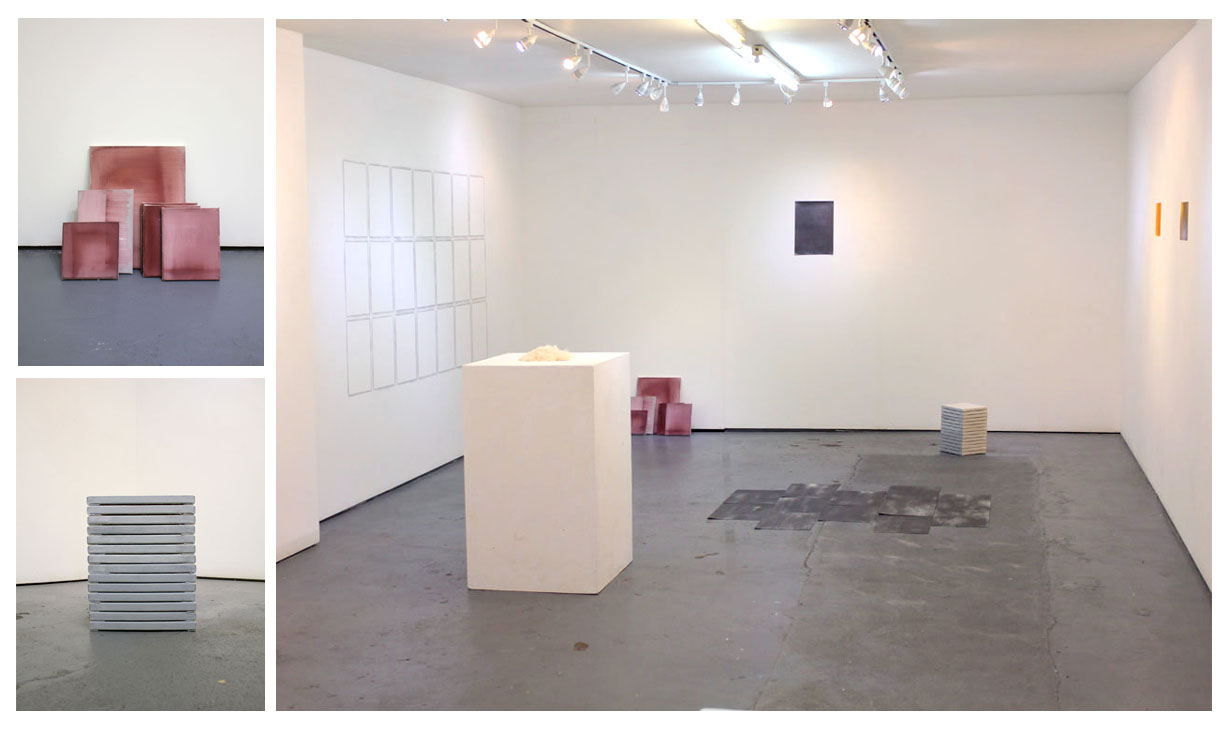
Through future research I hope to build on my dissertation as a model for the exchange of ideas between experimental psychology, art theory and art practice. Although within the dissertation I did not conduct original empirical research I believe there is scope to expand on the theoretical frameworks that I developed through experimentation. I am also keen to further disseminate my findings through practice-based research resulting in creative outcomes that can be publically exhibited.
List of References
Barthes, R. (1981). Camera lucida: Reflections on photography. New York: Farrar, Straus, and Giroux.
Coplans, J. (1968). Serial imagery. Pasadena: Pasadena Art Museum.
De Duve, T. (1996). Resonances of Duchamps Visit to Munich. In R. Kuenzli & F.M. Naumann, Marcel Duchamp: Artist of the Century. Cambridge and London: The MIT Press.
Fer, B. (2004). The infinite line: Re-making art after Modernism. Hartford: Yale University Press.
Goldsmith, K. (2004). I’ll be your mirror: The selected Andy Warhol interviews 1962-1987. New York: Caroll & Graf Publishers.
Hunter, S. (1973). The Aesthetics of Boredom. In S. Hunter and J. Jacobus eds. American Art of the 20th Century: Painting, Sculpture, Architecture. New York: Simon and Schuster.
Krauss, R.E. (1990). The story of the eye. New Literary History, 21(2), 283-298.
Reber, R., Schwarz, N. & Winkielman, P. (2004) Processing fluency and aesthetic pleasure: is beauty in the perceiver’s processing experience? Personality and Social Psychology Review, 8(4), 364–82.
Sagner-Duchting, K. (2002). Monet and Modernism. Munich and London: Prestel.
Young, A. W., & Bruce, V. (2011). Understanding person perception. British Journal of Psychology, 102, 959–74.
Zajonc, R. B. (1968). Attitudinal effects of mere exposure. Journal of Personality and Social Psychology, 9(2), 1–27.
PhD Researcher Abelardo Gil-Fournier has contributed work to an exhibition, Cartographic Operations, at the University’s L4 Gallery space. His work appears alongside that of WSA Staff, Ian Dawson, Sunil Manghani and Jane Birkin.
Cartographic Operations
L4 Gallery, February – March 2017
In Bernhard Siegert’s ‘The map is the territory’, he refers to the idea of ‘cartographic operations’. The suggestion is that our way of seeing the world is not simply represented in maps, but that map-making is itself a play of competing signs and discourses producing our subjecthood. These are the coordinates we come to live by, which in turn influence the marks and signs at our disposal when we seek to make and share representations of the world. This exhibition brings together three alternative cartographic operations with the work of Jane Birkin, Abelardo Gil-Fournier and Sunil Manghani and Ian Dawson (see ‘Exhibited Works’ below). The exhibition was devised to complement Beyond Cartography: Safeguarding Historic Maps and Plans, an exhibition in the Special Collections Gallery that showcases maps from the University of Southampton Library’s Special Collections, illustrating the challenges that these objects bring to conservators before conservation or long-term preservation takes place.
Cartographic Operations runs from 20 February to 20 March and sits alongside the exhibition in the Special Collections Gallery, Beyond Cartography: Safeguarding Historic Maps and Plans. Private View: Tuesday 28 February, 5pm to 8pm. [Sign up via Facebook]
Exhibited Works
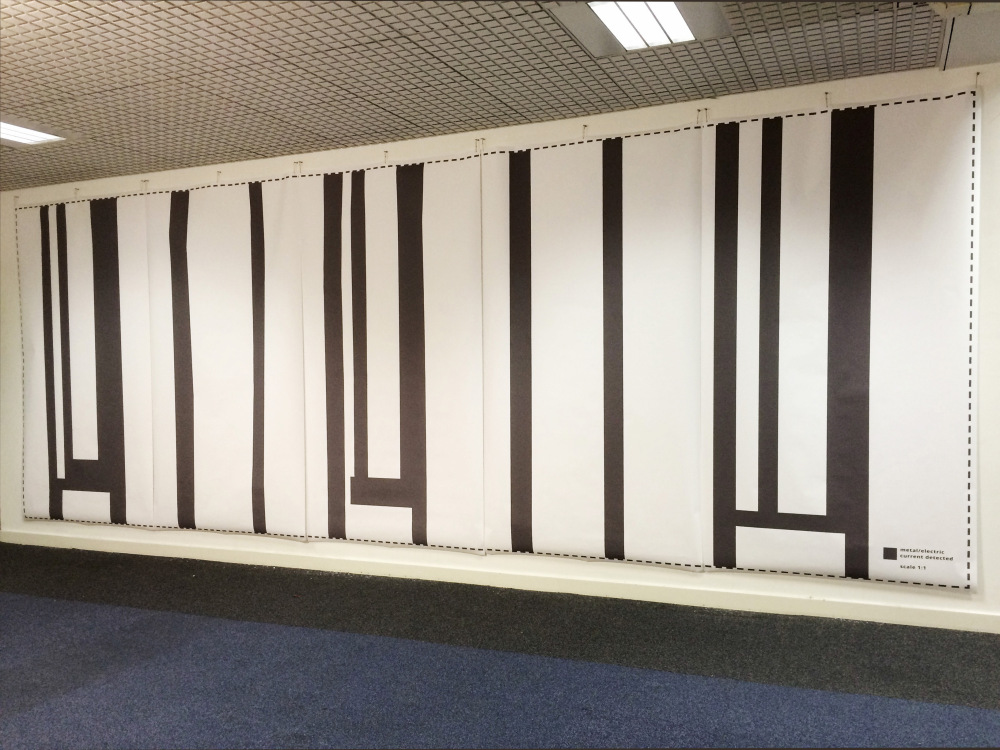
![Jane Birkin, 1:1 (2017) [detail]](http://blog.soton.ac.uk/wsapgr/files/2017/02/jane21.jpg)
![Jane Birkin, 1:1 (2017) [detail]](http://blog.soton.ac.uk/wsapgr/files/2017/02/jane31.jpg)
There are literary precedents for mapping at this scale. In Jorge Luis Borges’s short story On Exactitude in Science cartography became exactingly precise, producing a map that has the same scale as its territory. And, in Lewis Carroll’s Sylvie and Bruno Concluded, a German professor tells how map-makers experimented with the use of ever larger maps, until they finally produced a map of the scale of 1:1. ‘It has never been spread out, yet’, said the professor. ‘The farmers objected: they said it would cover the whole country, and shut out the sunlight!’ In this case, the gallery wall is covered, shut off from light and eyes. Although 1:1 is an impassive engagement with the rule-based activity of cartography, it simultaneously performs an affective act of display.
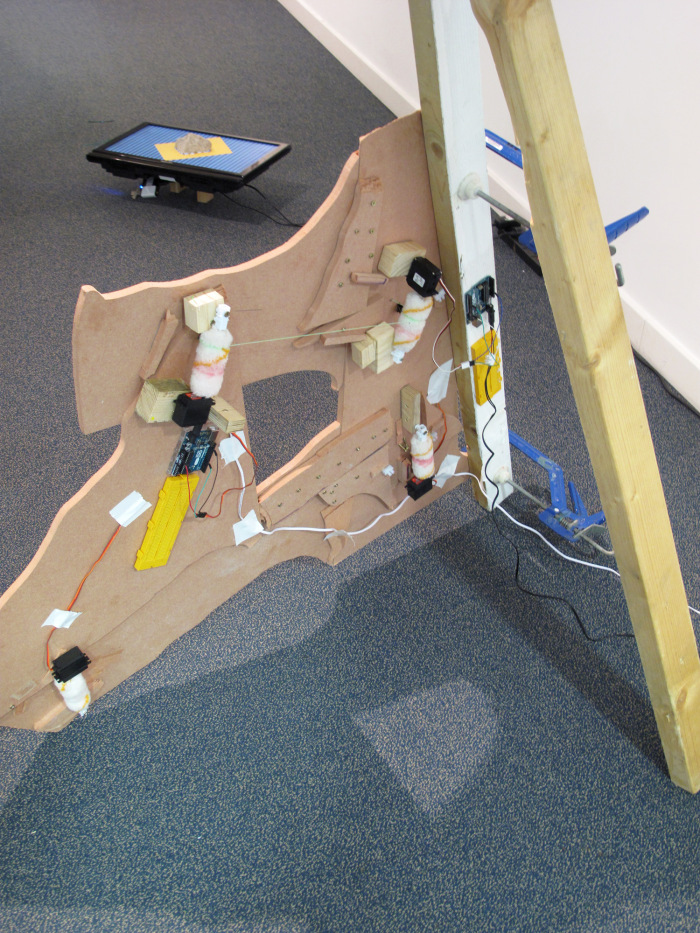
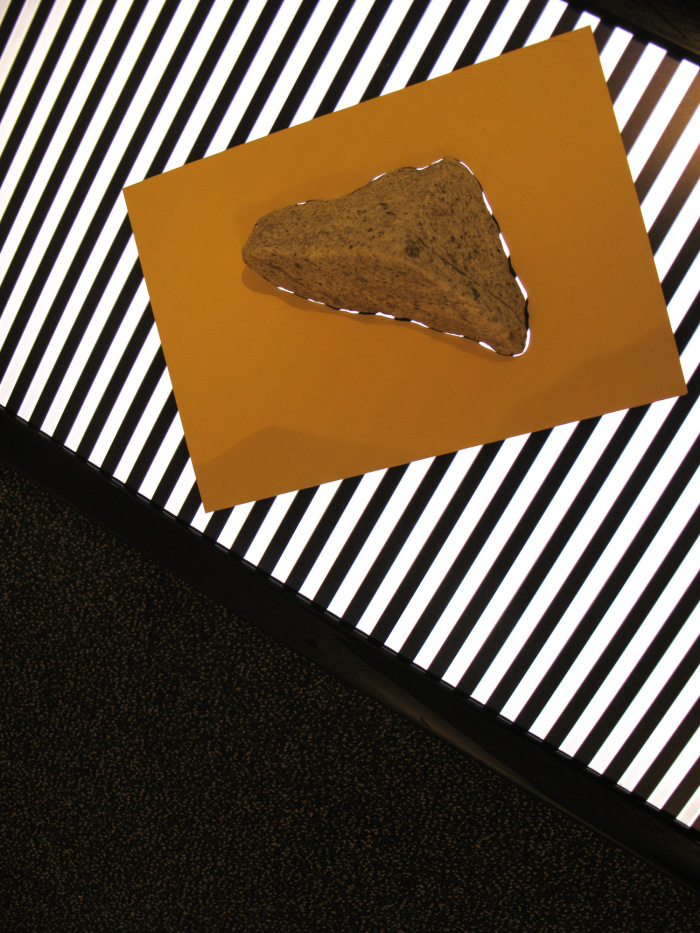
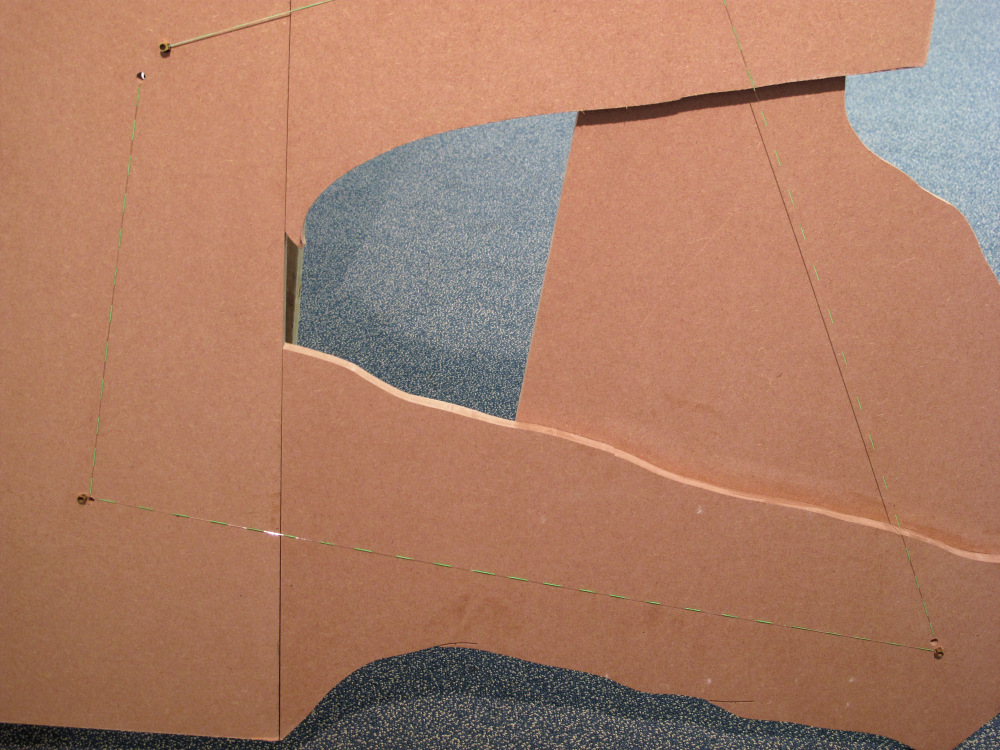
Abelardo Gil-Fournier’s Marching Ants draws upon historical photographic sources of landscape transformations driven by the building of large water irrigation infrastructures as part of 20th century Spanish land reforms. The work is a reminder of the use of forced labor to transform the lines of maps and diagrams into tunnels and channels in the earth. An economic exploitation of political repression that took place during more that 20 years within Penal Colonies that have been since then removed and forgotten.
The marching ants effect, also known as marquee selection, is the animated border of dashed lines often used in computer graphics programs where the dashes seem to move slowly sideways and up and down, as ants marching in line. It is the visible sign of a potentially immediate transformation within the surface of the screened image. Considered from the point of view of an aerial landscape, operations such as gridding, ordering or leveling land, the marching ants are a form of cultural technique, the tracing of an interaction between imaging technologies, environment, geography and governmental knowledge

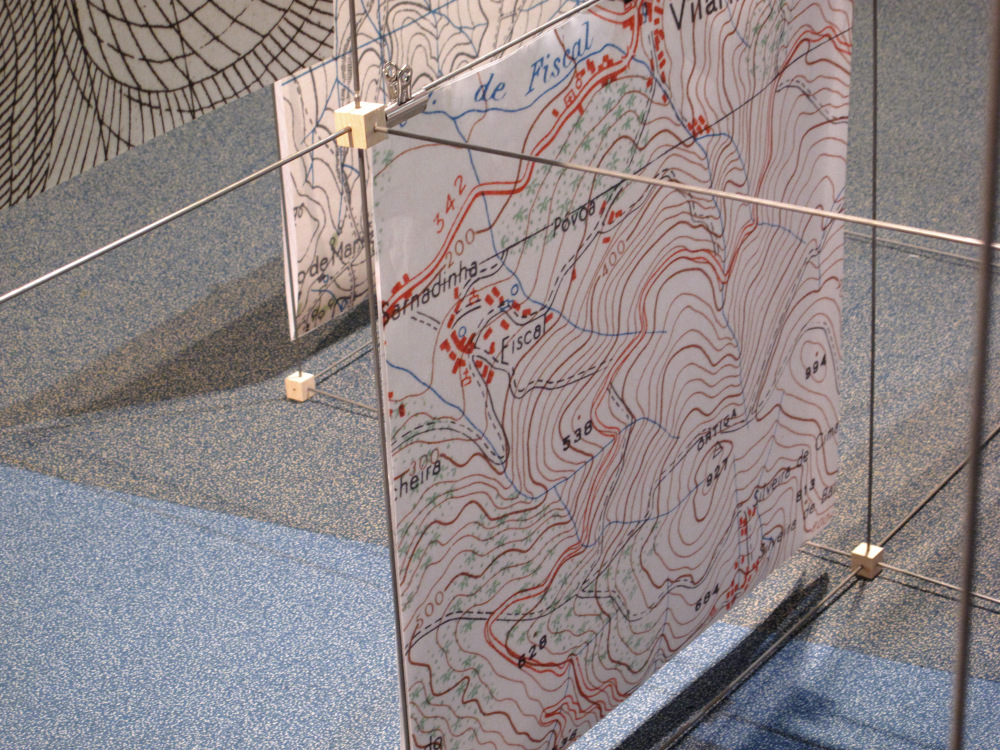
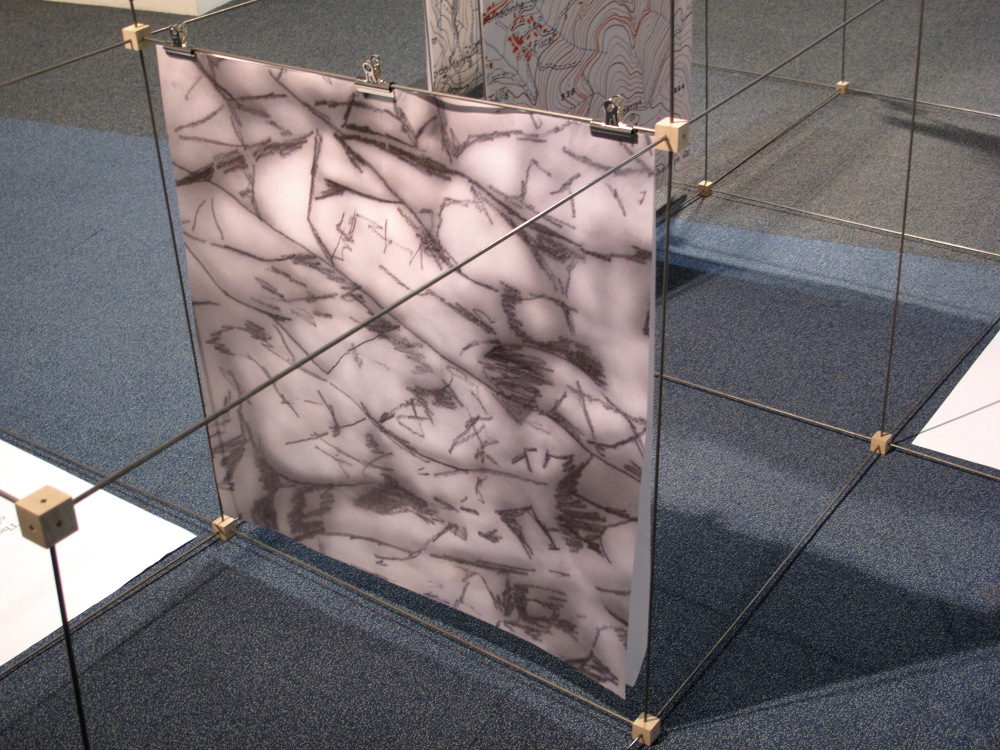
Sunil Manghani and Ian Dawson’s Not on the Map is an image-text installation built into the gallery space. It draws upon maps held in the University’s Special Collections, picking out details from a volume of Spanish maps from the Ward Collection and military maps of Portugal taken from the Bremner Collection. These details are placed in dialogue with tracings from early and recent figurative works by Jenny Saville – the noted contemporary British artist associated with the Young British Artists of the 1990s and well-known for her large-scale female nudes. The rendering of her work here offers a play on the distinctions between perception/sensations and geography/landscape, which combined with details from real maps only blurs and disorientates our ways of reading lines, sites and points of view. In recent work, Saville shows bodies together, such as an infant wrestling in a mother’s arms, couples embracing, a fight, and children playing in the sand. Such scenes take us into uncharted territories, which we might liken to the enigmatic inks of long forgotten maps. Unlike the spectacle of the body in Saville’s early work, the configuration of images staged here pose as private, idiosyncratic landscapes made up of no single definite lines.
Archaeologies of Media and Technology (AMT) research group has started organizing a reading group on media theory. The reading group had its first meeting in October with the aim of initiating a lively forum for discussion amongst students and faculty whose interests overlap with AMT. The research group itself—an office for theoretical and practice-based work in media, design and art, in relation to both contemporary culture and cultural heritage—had its inaugural conference, Future Past Tense, earlier the same month.
We meet at the PhD room in Winchester campus fortnightly to discuss selected texts that relate to themes and topics, concepts and issues in contemporary media theory. The work range from German media theory to new materialism, from issues of power and politics to the role technologies play informing what is produced as material reality.
Some of the first sessions had a particular emphasis on the theorisation of ‘cultural techniques,’ with a couple meetings dedicated to explore the writings of some of the key theorists of the area: Bernhard Siegert, Cornelia Vismann and Geoffrey Winthrop-Young. The discussions revolved around the limits of such conceptualisation in analysing the emergence of objects and processes in contemporary media culture.
We also convened a seminar in collaboration with the PhD studio week to address “critical technical practice” and discuss current approaches to media and art research from a practice-based perspective. It involved issues around making and unmaking and the questions of media technologies as epistemological and aesthetic frameworks. A range of relevant art practices and projects (such as art group YoHa and Critical Engineers) were discussed, as well as the work of the participants. Michael Dieter’s ‘The Virtues of Critical Technical Practice’ was the key text for this workshop.
Recently, we have been increasingly occupied with the problems surrounding life and politics in the present: thinking, writing and making about/with media and technology in the midst of ecological catastrophe. The first port of call in this journey was Donna J. Haraway’s recent book Staying with the Trouble: Making Kin in the Chthulucene, which will inform coming meetings.
AMT directors Jussi Parikka and Ryan Bishop have been collaborating closely with Berlin based digital media arts festival transmediale. A product of this dialogue is the reader, across & beyond, which has been published to mark the 30th anniversary of the festival. The books is edited by the directors of AMT with transmediale’s Kristoffer Gansing and Elvia Wilk. We will engage with the articles, as well as artworks, that reside in this book in the coming sessions.
If you are interested in the reading group, please contact us:
Jussi Parikka / j.parikka@soton.ac.uk
Yiğit Soncul / yigit.soncul@soton.ac.uk
Webpage: http://www.southampton.ac.uk/amt
The PhD Studio Intensive ran for a whole week, between 14-18 November 2016. Situated in a large shared space (just off of the main sculpture studio), participants were encouraged to work intensively to explore their own areas of practice, but within the context of a collective environ.
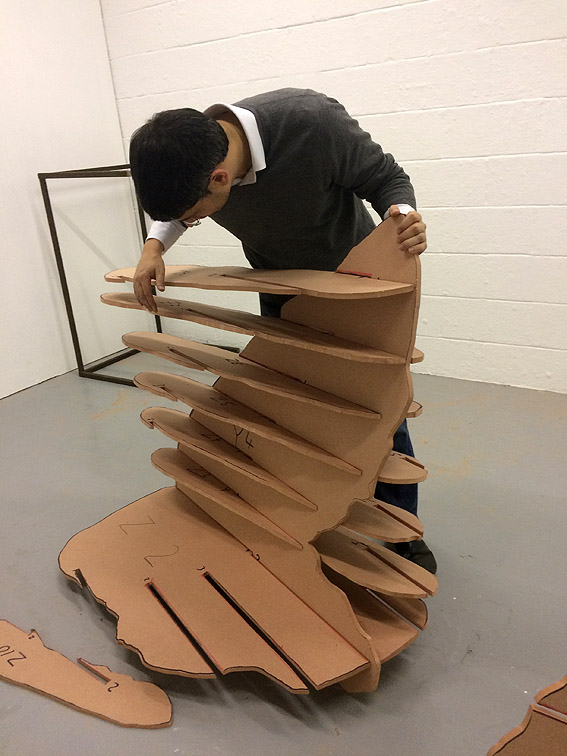
Led by Ian Dawson and Sunil Manghani, who themselves were collaborating in making sculptural works, the intensive week brought together a number of our practice-based researchers: Cheng-Chu Weng, Lucy Woollett, Tessa Atton, Noriko Suzuki-Bosco, Eria Nsubuga, Rebeca Font, Elham Soleimani Bavani, Sarvenaz Sohrabi, Yang Mei, Jane Birkin, Abelardo Gil-Fournier and Jonty Lees. The areas of practice spanned widely, including graphics, installation, photography, painting, drawing sculpture, mixed media and social art practices. The studio was also visited by Gordon Hon, Victor Burgin, Daniel Cid, Jussi Parikka and Ryan Bishop over the course of the week, adding to the discursive and makerly dialogues that ran throughout.
The underlying approach to the workshop and the aim of bringing fellow practitioners together for a full week was to echo the Triangle Workshops set up by Anthony Caro and Robert Loder back in the early 1980s, which led to projects and partnerships in over 40 countries worldwide. It all began with an artists’ workshop in Upstate New York, in 1982, which brought together around 25 emerging and mid-career artists from the US, Canada and UK. They spent two weeks making work. In placing emphasis on the process of making work, rather than the product, the workshop provided time and space to explore new, independent work informed by the exchange of ideas and the sharing of knowledge and skills.
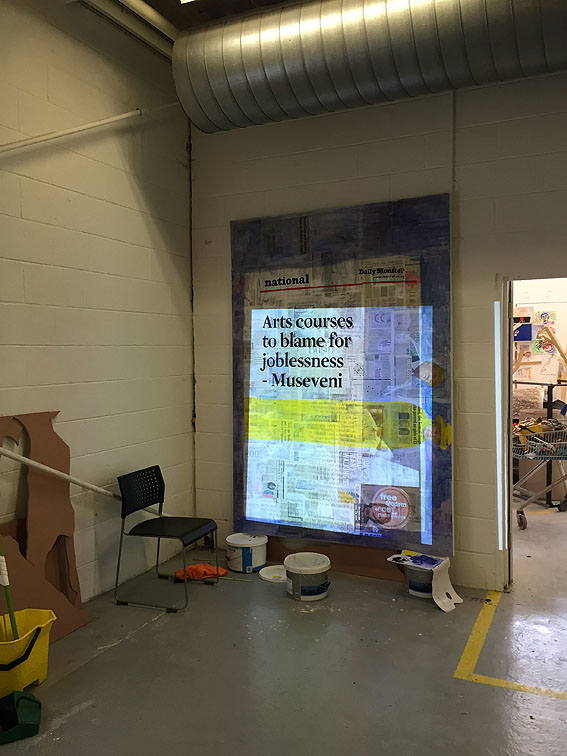
Comments from members of the group:
‘I enjoyed the Studio Intensive Week so much… I have returned full of enthusiasm, energy and a thousand ideas inside my head. […] I took with me, Eria’s feelings (the conversations I had with him about politics and his country), Yang’s brushwork (and her calm), Elham’s line, the shadows of Cheng-Chu, the invisible presence in Jane’s photos, Tess’s tenacity (and her immense kindness), and an unforgettable presentation and discussion of my work with everyone. I take all the comments and thoughts of that moment with me’ – Rebeca Font
‘I still keep thinking on the conversations and shared experiences that took place. It is very interesting to cohabit a space while being involved in practice-based work. Space becomes electrical somehow, with lots of interferences and thoughts sparking all around. Making practice public also exposes both bodies and ideas in a very different way, and in this sense I particularly enjoyed knowing you all in this non-seminar type of situation’ – Abelardo Gil-Fournier
‘…the Studio Week was very useful as it gave us the chance not only to create art but also to witness the creation of other art objects/projects by other artists. [It was a] week to learn/create art, explore new techniques and materials and have interesting and inspiring dialogues with other artists’ – Elham Soleimani Bavani
‘Working with different researchers from different cultures is really very interesting. We create our works with different themes. Because of our different cultures and backgrounds, we experience a fusion and collision of ideas’ – Yang Mei
‘Time, space and other artists – three luxuries that are rarely available concurrently – were offered to us freely for a week. I greedily optimised this opportunity by turning a photographic negative into an installation and by working with other artists on different aspects of my larger project, all the while building relationships with the interesting and diverse group I am fortunate enough to be part of. An excellent week’ – Tessa Atton
‘I was quite uncertain at first about how to go forward with this kind of space. I was greatly inspired by the space and how everybody went around ‘conquering it’. I think Rebeca literally did that! And the Rotunda wacky race was great. Thanks Lucy and Noriko, and for the wonderful portrait Lucy. I enjoyed the work of everyone in the workshop even if i have not mentioned names. A big thank-you to Ian for the great hand of support and for the space. I hope to work in it again. Thanks Sunil for leading by example and being part of the whole experience. I was inspired by that’ – Eria NsubugaIt was the first time to see people’s working process rather than seeing the result of work. While we might have been slightly nervous working with each other, through sharing the studio space any apprehension seemed to disappear. Moreover, through giving each other support and feedback, a sense of learning from each other could be seen in this context, similar to the spirit to the former accounts of Black Mountain College. – Cheng-Chu Weng‘The studio week great opportunity to push things forward in the practice realm. Be it by creating work and projects through material, performative or dialogical processes. It was a great catalyst for discussion on socially engaged practice for Noriko using the context of the school’s very own Brutalist Rotunda. An inside, outside space which will become the focus of further enquiries. Both past and present PhDs, Bevis and Jonty joined in and contributed to the conversation. I also spent some time painting Practice Portraits of Artists in process either in the act of making, thinking or talking about work. Thanks, It was great to work with everyone and get a dialogue going on about our practice’ – Lucy Woollett
Cheng-Chu Weng, currently pursing a practice-based PhD at Winchester School of Art, recently curated an exhibition that accompanied the conference ‘Minimalism: Location Aspect Moment‘, which was held at University of Southampton/ Winchester School of Art event (October 14th-15th 2016), and organised by Paul Hegarty, Sarah Hayden and Ryan Bishop, in conjunction with the John Hansard Gallery.
One of the purposes of ‘Minimalism: Location Aspect Moment’ was to expand our conception of what minimalism was, where it happened, who was making it, why, and how it extends through time until now. It is clear that the minimalist impulse happened in cross-national encounters (such as the 1967 show Serielle Formationen in Frankfurt) and that Europe was fertile ground for explorations in serial works, in playing with the prospect of singular forms and systematic thinking. Admitting the significance of the naming of the idea of minimalism in the 1960s, the conference looked back to earlier versions of the reductionist, repetitive, singularising or multiplying intents of core minimalist endeavour. As a result, the event sought consider what an expanded field of minimalism looks like, sounds like.
The exhibition accompanying the conference brought together the work of nine staff, PhD researchers and alumni from Winchester School of Art. The works and wall texts can be viewed in a specially prepared PDF document.